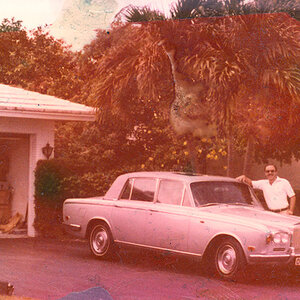cynicaster
No longer a newbie, moving up!
- Joined
- Feb 27, 2013
- Messages
- 756
- Reaction score
- 301
- Location
- Ontario, Canada
- Can others edit my Photos
- Photos OK to edit
Recently Ive been learning about off-camera flash in a more structured budget-studio type setup with modifiers, etc. and Im really enjoying it, but Im starting to get fed up with the limitations of the built-in wireless system on my T3i. I love how Im able to set the controls right there at the camera, but the line of sight requirement for the system to workas well as its poor reliability outdoorsis driving me nuts so I was looking into some radio triggers.
As mentioned, I have a T3i, and one each 580EX-II and 430EX. I have access to a 320EX as well, if I need it.
Heres my problem: if I go the radio trigger route, Ill be forced to use my 430EX at full power, unless I spring for an ETTL-compatible wireless system.
Im not a pro, never will be, and the portraits for family and friends I take a few times a yeara scenario that accounts for only a small portion of my photographymake it hard to justify hundreds of dollars for Pocket Wizards or other such pro products, just to overcome a limitation with the 430EX. Especially since Ive read over and over how budget priced triggers from Yongnuo and others are working well for lots of hobbyists like me.
So if the goal is to achieve a two-light setup, with my current kit as the starting point, what would you do? Some options that come to mind:
Im a big sucker for a favorable bang for your buck factor, because Im frugal (ok, cheap) by nature. However, within reason, money isnt really a problem in this instance; I dont mind a more expensive answer if it truly is the smartest answer for my particular situation. In case its not obvious, go with Pocket Wizard because its what the pros use is not a good enough reason to justify tripling or quadrupling the priceI need to see the extra value it would bring to my specific situation.
Thanks in advance
Matt
As mentioned, I have a T3i, and one each 580EX-II and 430EX. I have access to a 320EX as well, if I need it.
Heres my problem: if I go the radio trigger route, Ill be forced to use my 430EX at full power, unless I spring for an ETTL-compatible wireless system.
Im not a pro, never will be, and the portraits for family and friends I take a few times a yeara scenario that accounts for only a small portion of my photographymake it hard to justify hundreds of dollars for Pocket Wizards or other such pro products, just to overcome a limitation with the 430EX. Especially since Ive read over and over how budget priced triggers from Yongnuo and others are working well for lots of hobbyists like me.
So if the goal is to achieve a two-light setup, with my current kit as the starting point, what would you do? Some options that come to mind:
- Sell the 430EX and replace it with a manual-capable flash, buy the Yongnuo triggers
- Buy a reasonably priced third-party flash that has manual capability, buy the Yongnuo triggers, keep the 430EX as a third light
- Bite the bullet on ETTL capable triggers
Im a big sucker for a favorable bang for your buck factor, because Im frugal (ok, cheap) by nature. However, within reason, money isnt really a problem in this instance; I dont mind a more expensive answer if it truly is the smartest answer for my particular situation. In case its not obvious, go with Pocket Wizard because its what the pros use is not a good enough reason to justify tripling or quadrupling the priceI need to see the extra value it would bring to my specific situation.
Thanks in advance
Matt





![[No title]](/data/xfmg/thumbnail/40/40286-86401b94de8b01bea8bb4ea154aaea0a.jpg?1619739408)

![[No title]](/data/xfmg/thumbnail/41/41782-daa26990361bf4193a874908bda10dbb.jpg?1619739891)






![[No title]](/data/xfmg/thumbnail/42/42464-98a778e864f4e6df2a9cc673b7549322.jpg?1619740192)